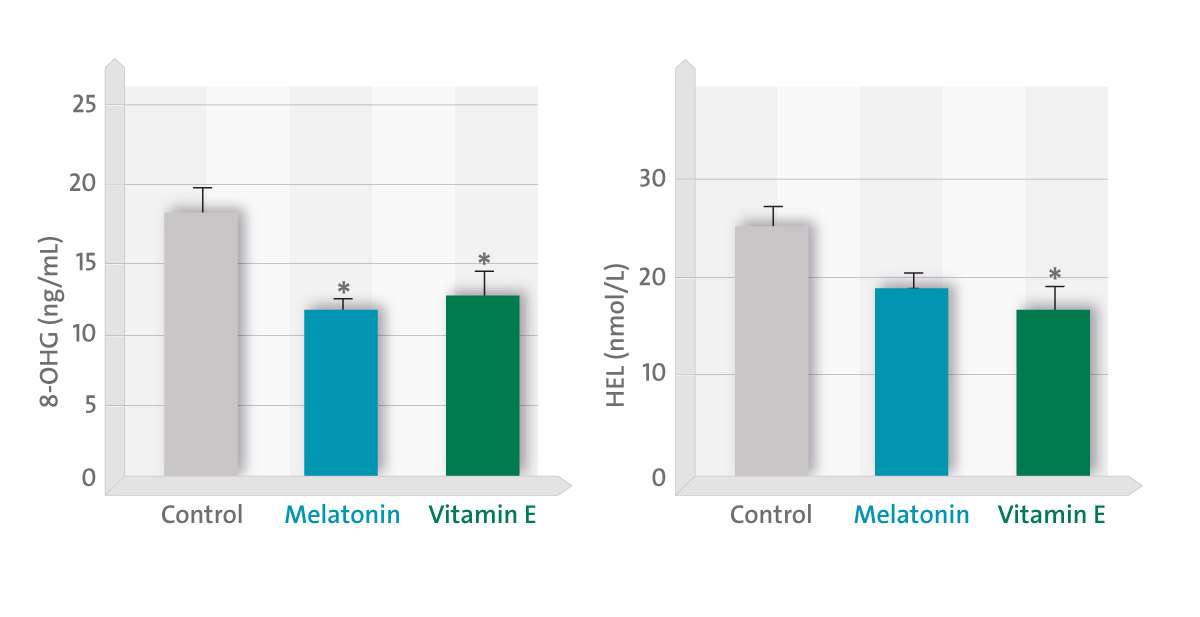We investigated the relationship between oxidative stress and poor oocyte quality and whether the antioxidant melatonin improves oocyte quality.
Follicular fluid was sampled at oocyte retrieval during in vitro fertilization and embryo transfer (IVF-ET). Intrafollicular concentrations of 8-hydroxy-2′-deoxyguanosine (8-OHdG) in women with high rates of degenerate oocytes were significantly higher than those with low rates of degenerate oocytes. As there was a negative correlation between intrafollicular concentrations of 8-OHdG and melatonin, 18 patients undergoing IVF-ET were given melatonin (3 mg/day), vitamin E (600 mg/day) or both melatonin and vitamin E. Intrafollicular concentrations of 8-OHdG and hexanoyl-lysine adduct were significantly reduced by these antioxidant treatments.
One hundred and fifteen patients who failed to become pregnant with a low fertilization rate (< or =50%) in the previous IVF-ET cycle were divided into two groups during the next IVF-ET procedure; 56 patients with melatonin treatment (3 mg/day) and 59 patients without melatonin treatment. The fertilization rate was improved by melatonin treatment compared to the previous IVF-ET cycle. However, the fertilization rate was not significantly changed without melatonin treatment. Oocytes recovered from preovulatory follicles in mice were incubated with H2O2 for 12 hr. The percentage of mature oocytes with a first polar body was significantly reduced by addition of H2O2 (300 microm). The inhibitory effect of H2O2 was significantly blocked by simultaneous addition of melatonin.
In conclusion, oxidative stress causes toxic effects on oocyte maturation and melatonin protects oocytes from oxidative stress. Melatonin is likely to improve oocyte quality and fertilization rates.
